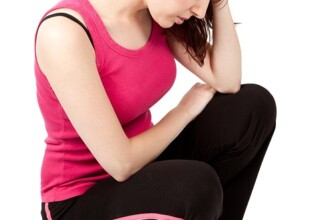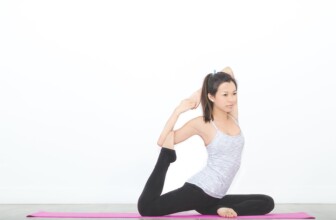Unleashing Core Power: The Transformative Benefits of Pilates for Strength and Stability
Introduction
In recent years, Pilates has emerged as a preferred form of exercise for those seeking to improve core strength and stability. Developed by Joseph Pilates in the early 20th century, this practice is more than just a physical workout; it is a holistic approach that integrates body and mind, promoting overall wellness.
This article delves into the transformative benefits of Pilates for strength and stability. We will explore its history, foundational principles, specific benefits, real-world applications, and address common misconceptions and questions through an in-depth Q&A section.
1. The History of Pilates
Joseph Pilates was born in Germany in 1883, and he created his system of exercise based on his understanding of body mechanics, anatomy, and movement. Originally called “Contrology,” Pilates was intended as a way to rehabilitate soldiers and dancers during World War I. Joseph saw that many injuries were due to a lack of core strength and proper alignment, which led to the development of his exercise methods, emphasizing control, breath, and core stability.
This section will further detail the evolution of Pilates over the decades, discussing its growth from a niche rehabilitation method to a mainstream fitness trend embraced by millions around the globe.
2. The Foundational Principles of Pilates
At the core of Pilates practice are several foundational principles that practitioners must understand to fully appreciate its benefits. These include:
- Concentration: Focus on the precise execution of each movement.
- Control: Every exercise should be performed with control, emphasizing the importance of form over quantity.
- Centering: Core strength is central to the practice; the “Powerhouse” refers to the abdominal area.
- Precision: Rather than performing numerous repetitions, Pilates prioritizes the quality of movement.
- Breathing: Proper breathing techniques enhance performance and focus.
- Flow: Movements should be smooth and fluid, linking exercises for seamless transitions.
Understanding these principles is crucial for both instructors and practitioners and enhances the effectiveness of the practice.
3. The Physical Benefits of Pilates
One of the most significant benefits of Pilates is its impact on physical strength and stability. This section will examine how Pilates helps in:
3.1. Enhancing Core Strength
A strong core is fundamental for every movement we make. Pilates, through its emphasis on core engagement, not only improves flexor and extensor strength but also stabilizes the spine.
3.2. Improving Flexibility
Pilates incorporates stretching as part of its routine, which can lead to increased flexibility in muscles and joints, thus reducing the risk of injuries.
3.3. Rehabilitating Injuries
Many physiotherapists use Pilates as part of rehabilitation programs due to its low-impact nature. It is particularly useful for recovering from back, knee, and shoulder injuries.
3.4. Enhancing Overall Fitness
Pilates enhances overall physical fitness, improving posture, balance, muscle tone, and endurance. It promotes body awareness which translates into better coordination.
4. The Mental Benefits of Pilates
Beyond the physical benefits, Pilates also emphasizes the mind-body connection. Incorporating breath and focus helps practitioners become more in tune with their bodies and improves mental clarity and peace.
4.1. Reducing Stress
The meditative nature of Pilates encourages relaxation, making it an effective way to reduce stress and anxiety levels.
4.2. Enhancing Concentration
The focus required during Pilates enhances mental acuity, improving concentration not only in the studio but also in daily life tasks.
4.3. Boosting Confidence
As practitioners become stronger and more flexible, their self-esteem grows, leading to overall enhanced confidence levels.
5. Real-Life Case Studies and Examples
To illustrate the transformative power of Pilates, consider the following case studies:
5.1. Case Study: Sarah, the Dancer
Sarah, a professional dancer, struggled with chronic back pain and flexibility issues. After incorporating Pilates into her daily routine, she not only rehabilitated her back but also improved her overall strength and flexibility, allowing her to perform at higher levels than before.
5.2. Case Study: John, the Office Worker
John, an office worker, faced constant fatigue and poor posture due to long hours at a desk. After taking Pilates classes, he reported improved posture, reduced back pain, and greater energy levels throughout the day.
6. Common Misconceptions about Pilates
Despite its popularity, there are several misconceptions about Pilates that need addressing:
6.1. “Pilates is only for Women”
Although it has historically attracted a female audience, Pilates is beneficial for everyone, including athletes and men, who can gain immense strength, flexibility, and core stability.
6.2. “Pilates is Easy”
Many assume Pilates is a simple workout. However, it can be very challenging, demanding concentration and control, especially as practitioners progress towards more advanced exercises.
6.3. “Pilates and Yoga are the Same”
While both disciplines emphasize breath and body awareness, they have different focuses and methodologies. Pilates focuses more on strength and stabilization, while yoga emphasizes flexibility and spirituality.
7. Q&A Section
Frequently Asked Questions
Below are some of the most common inquiries regarding Pilates:
Q1: How often should I practice Pilates?
A1: It is generally recommended to practice Pilates at least 2-3 times per week for optimal benefits.
Q2: Do I need any special equipment for Pilates?
A2: While many Pilates exercises can be performed on a mat, additional equipment like reformers, stability balls, and resistance bands can enhance your practice.
Q3: Can Pilates help with weight loss?
A3: While Pilates is primarily focused on strength and flexibility, combined with a healthy diet, it can contribute to weight loss and muscle toning.
Q4: Is Pilates suitable for beginners?
A4: Absolutely! Pilates is suitable for individuals at any fitness level, as exercises can be modified to accommodate various abilities.
8. Resources
| Source | Description | Link |
|---|---|---|
| The Pilates Method | Official website detailing the philosophy and history of Pilates. | www.pilates.com |
| Physical Benefits of Pilates | A research article on the physical health benefits of Pilates. | NCBI Research Article |
| Pilates Anytime | Online platform offering live and recorded Pilates classes. | www.pilatesanytime.com |
| National Pilates Certification Program | Information about Pilates certification for instructors. | www.pilatescertification.org |
Conclusion
Pilates is a powerful form of exercise that enhances not only physical strength and stability but also mental well-being. Its holistic approach makes it adaptable for everyone, from athletes to rehabilitation seekers. As we move toward the future, trends such as virtual classes and integration with other fitness modalities are expected to grow, making Pilates even more accessible.
Embracing Pilates can unleash core power, leading to a stronger, more balanced, and healthier life.
Disclaimer
The information provided in this article is for educational purposes only and should not be considered medical advice. Always consult a healthcare professional before beginning any new exercise regimen, particularly if you have pre-existing conditions or concerns.










